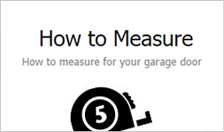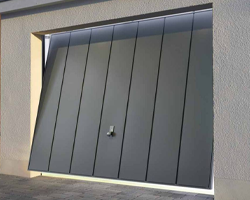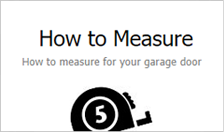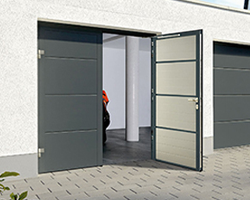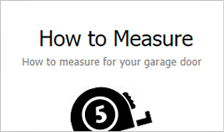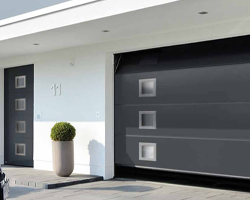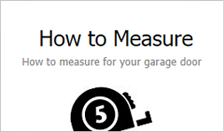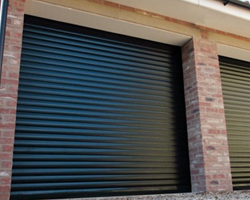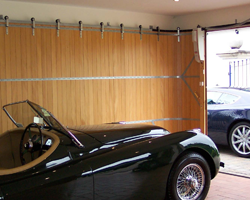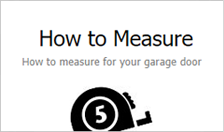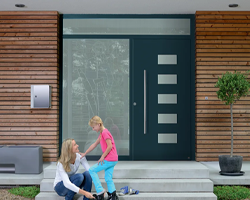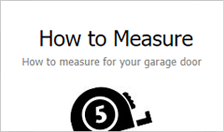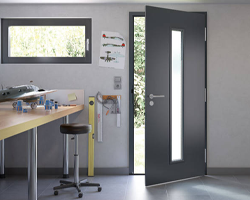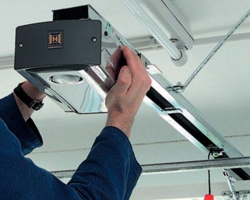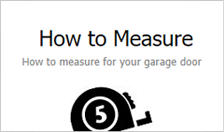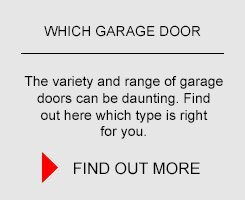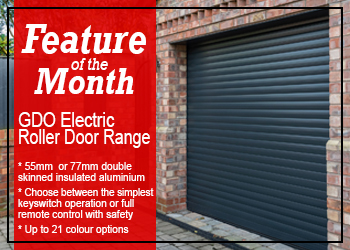Sectional Sizes and Pricing
Sectional garage doors are always ordered and priced by the size of the internal dimensions of the outer fixing frame (the daylight opening) in which the sectional door operates. The actual sectional door panels will always be slightly wider than the actual ordering sizes to have a small overlap in the steel fixing frame and provide the best weather sealing. This is the same in the height too, so there is an overlap at the top and therefore a seal against the top section of the fascia panel.
All the sectional garage doors we offer in our online shop have a top fascia panel included, and there are still manufacturers who do not provide this section so be aware as most standard sectional door heights won’t marry up with a standard UK floor to lintel height, meaning a section is nearly always required unless you order a purpose made height.
If fitting between the opening, please deduct 180mm from the opening width to determine the ordering width.
Deduct 120mm for manual doors and 140mm for electric operation (unless the additional fitting bracket is purchased then 120mm applies) from the opening height to determine the ordering height.
.jpg)
Reveal (Inbetween) Installation
As it is possible nowadays to install sectional garage doors inbetween structural openings as well as behind then like many doors the real sizes to consider are the overall Width and overall. Height with the fixing sub frame and the operating gear included. The ordering sizes don’t include the frame or the height required for the chosen mechanism so this needs to be included and allowed for with a tolerance when you intend to fit inbetween your opening.
When you are installing behind the structural opening, as originally intended for this type of door, then the ordering sizes in theory should be exactly the same as the structural opening sizes for the perfect installation and best security, insulation and protection from weather.
Many people will make a standard sized door fit into the non standard sized opening and this is possible either way as a sectional door does not travel through the opening at any point during operation so you can place a smaller or larger door behind the structural opening and it still operates OK. However, be aware of potential aesthetic issues when doing this and also compromises in the performance of the door with security and insulation, particularly when the door is smaller than the opening.
N.B. Always check if there is an inbetween installation kit required with the sectional door you are intending to use. Most manufacturers offer this as an extra item.
Example:
Hormann LPU42 M Ribbed woodgrain sectional door with Z track mechanism (side springs)
Ordering size 2286mm wide and 2125mm high (7’6” x 7’0” in imperial references)
Frame legs are actually 82.5mm wide either side and the head frame profile is 90mm deep but the headroom required is 100mm for the mechanism.
The frame legs either side require 90mm to include the nut heads sticking out the sides and some tolerance and the headroom is still 100mm above the 2125mm for the door to operate without obstruction.
If you were needing to install this door inbetween your structural opening you would require a minimum structural opening width of 2466mm and a minimum floor to lintel height of 2225mm.
You would need a small infill to the head as the head section profile is only 90mm and for the side legs you also need some material for cloaking or something like a quadrant or cladding section.
If you were installing behind the opening then the structural sizes could be quite varied either way as long as you had sufficient room internally on the reveals and above the underside of the lintel.
There are many options with most sectional doors in how the mechanism is arranged and the torsion spring assembly position so if you have any unusual dimensions or obstructions in your garage it is best to contact us to discuss fully.
